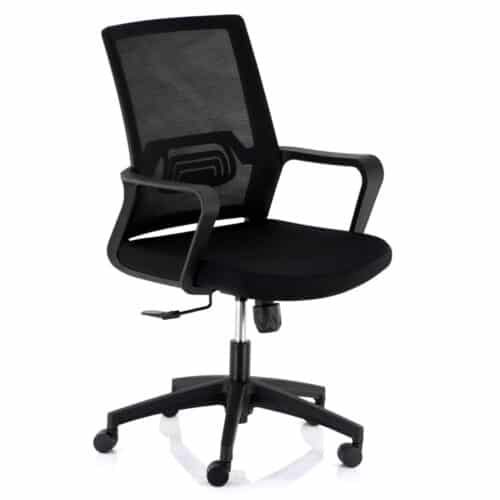An office chair is an essential part of any workspace. Whether you work from home or in a traditional office, maintaining your office chair is crucial to ensure its longevity. Whether paired with a computer desk with shelves or a simple table, here’s a comprehensive guide on how to keep your office chair in top condition for years to come.
Regular Cleaning
Dust and Debris Removal
Regular cleaning is vital for maintaining your office chair. Dust and debris can accumulate on the chair, especially in hard-to-reach areas. Use a vacuum with a brush attachment to remove dust from fabric and crevices. For leather chairs, a damp cloth can help clean the surface without damaging the material.
Spot Cleaning for Stains
Accidents happen, and stains on your office chair are inevitable. Spot clean stains as soon as they occur using a mild detergent and water. Test the solution on a small, hidden area first to ensure it doesn’t damage the fabric. For persistent stains, consider using a fabric cleaner specifically designed for office furniture.
Lubricating Moving Parts
Maintaining Smooth Movements
Your office chair has several moving parts, including wheels and swivel mechanisms. These parts need regular lubrication to function smoothly. Use a silicone-based lubricant to keep the wheels and swivel mechanism in good working order. Avoid using oil-based lubricants as they can attract dust and dirt.
Preventing Squeaks
If your office chair starts to squeak, it’s a sign that it needs lubrication. Apply a small amount of lubricant to the joints and moving parts. Ensure you wipe away any excess lubricant to prevent it from attracting more dust and dirt.
Adjustments and Alignment
Proper Ergonomic Adjustments
Adjusting your office chair correctly is crucial for your comfort and the chair’s longevity. Ensure that the chair’s height, backrest, and armrests are adjusted to support your posture. A properly adjusted chair reduces wear and tear by distributing your weight evenly across the chair.
Checking Alignment
Regularly check the alignment of your chair’s components. Misaligned parts can cause uneven wear and reduce the chair’s lifespan. If you notice any misalignment, adjust the chair immediately or consult the manufacturer’s instructions for proper alignment procedures.
Protecting the Chair
Using Chair Mats
Placing a chair mat under your office chair can protect both the chair and your floor. Chair mats reduce friction and prevent the chair’s wheels from wearing out quickly. They also protect your flooring from scratches and dents caused by the chair’s movement.
Avoiding Excessive Weight
Office chairs are designed to support a specific weight limit. Avoid exceeding this limit to prevent damage to the chair’s components. If you need a chair that supports more weight, consider investing in a heavy-duty office chair designed for higher weight capacities.
Regular Inspections
Inspecting for Damage
Conduct regular inspections of your office chair to check for signs of damage. Look for cracks, loose screws, or worn-out components. Addressing these issues early can prevent further damage and extend the chair’s lifespan.
Tightening Screws and Bolts
Over time, the screws and bolts in your office chair can become loose. Regularly check and tighten them to ensure the chair remains stable and secure. A loose chair can lead to more significant issues if not addressed promptly.
Upholstery Care
Maintaining Fabric Upholstery
If your office chair has fabric upholstery, vacuum it regularly to remove dust and debris. Use a fabric protector spray to create a barrier against stains and spills. Avoid placing the chair in direct sunlight to prevent the fabric from fading.
Caring for Leather Upholstery
Leather office chairs require special care to maintain their appearance and durability. Use a leather cleaner and conditioner to keep the leather soft and supple. Avoid exposing the chair to direct sunlight and heat sources, as these can cause the leather to crack and fade.
Proper Usage
Using the Chair Correctly
Using your office chair as intended is crucial for its longevity. Avoid standing on the chair or using it as a step stool. Ensure that the chair is used on appropriate surfaces to prevent damage to the wheels and base.
Regular Movement and Adjustments
Frequent adjustments and movements help prevent wear and tear. Avoid sitting in the same position for extended periods. Regularly adjust the chair’s position and your posture to ensure even wear on the chair’s components.
Conclusion
By following these maintenance tips, you can extend the life of your office chair and ensure it remains comfortable and functional for years to come. Whether you’re sitting at a computer desk sydney or working from a computer desk with shelves at home, a well-maintained office chair can significantly enhance your productivity and comfort. For more information on high-quality office furniture, visit dannysdesks.com.au.




